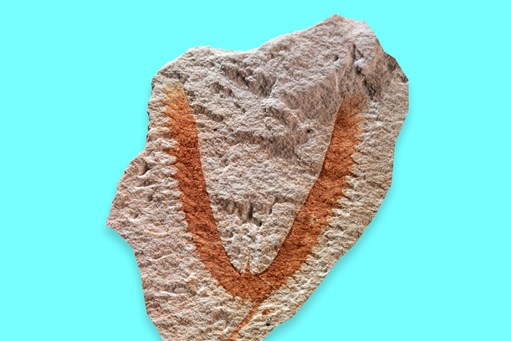1. Isograptus victoriae
Fossil animal colony formed ‘V’ for Victoria
These little ‘Vs’ are the remains of marine animals called graptolites that were abundant in the Ordovician, a time when life was abundant in the sea but not on land. Graptolite fossils are the remains of twig-like or net-like colonies of microscopic animals. Tiny feelers snatched or trapped food from the water current.
Their three-dimensional shapes were flattened by burial to form fossils like the V-shaped Isograptus victoriae. Fossils like Isograptus victoriae showed where the distorted rocks in central Victoria belonged to the same layers. Miners used them to track seams of gold underground. These fossils also show up worldwide – and help align sequences of rock layers thousands of kilometres apart.
About the animal
|
How do you say its name? |
Eye-so-GRAP-tus vic-TOR-ee-ye / GRAP-toe-lite |
|
How big? |
A few centimetres long |
|
When did it live? |
470 million years ago |
|
What did it eat? |
Plankton |
Fossil facts
|
Significant Victorian location |
Castlemaine, Goldfields |
|
Traditional Owners |
|
|
Who named it? |
Bendigo teacher and palaeontologist Dr William Harris (1886-1957) |
|
What is special about it? |
Isograptus fossils are found in sedimentary rocks around the world, so they act as time markers, indicating these rocks are all the same age. |
|
Significance of the fossil |
The first Isograptus victoriae were found in Victoria. |
|
Full name and meaning |
Isograptus victoriae, named after the Australian state of Victoria. Graptolite fossils resemble hieroglyphs written on the rock and are named from the Greek graptos meaning ‘written’, and lithos meaning ‘rock’. |








